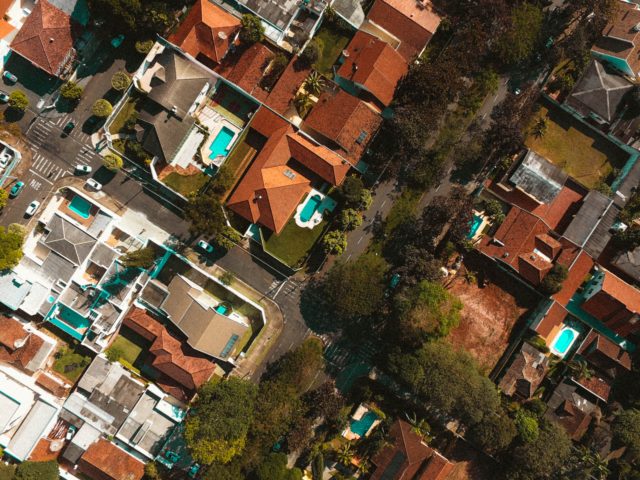
The determination of the Tax Income is made at the time of the formalization of the swap.
Valuation of real estate swaps
A real estate developer receives in 2004 a plot of land in exchange for money and some houses and parking spaces to be built. In 2008 the houses and parking spaces were awarded and delivered to the owner of the land, declaring at that time the corresponding tax income.
The promoter is subject to an inspection, in which it is questioned, among other aspects, the moment of determination of the valuation of a real estate swap, since in the opinion of the Inspection, the market value to be used for the calculation of the tax income must be the one existing in 2007 (moment in which it considers that the temporary imputation occurs for having reached 80% of completion of the building).
The Central Economic Administrative Tribunal, gives the reason on this point to the taxpayer, understanding that the determination of the tax income, difference between the market value of the land received in exchange for future buildings and the book value of the elements delivered (currently fiscal value), must be made based on the market value of the land on the date of formalization of the deed, that is, in 2004.
Regarding the criterion of temporary imputation held by the Inspection (having reached 80% of completion of the building), it should be borne in mind that with the current PGC it is not considered a valid criterion.
Accounting and tax aspects of the swap
Accounting aspects
A swap transaction can be considered as one by which an element is transmitted so that the amount of the consideration is not monetary, that is, another element is received in exchange for the one delivered.
From an accounting point of view, two typescan be differentiated:
- the commercialswap: when the cash flows of the fixed assets delivered differ from that received, or the present value of the cash flows of the entity that makes the swap as a result of it is affected. The item received is valued at the fair value of the delivered plus, where appropriate, the monetary consideration delivered; so that the difference between that value and the book value of the item delivered generates a result in the profit and loss account.
- the non-commercialswap: if the cash flows of the fixed assets delivered from that received do not differ. In this operation, no resultis derived to the extent that the real value of what is received is equal to or greater than the book value of what was delivered. Accountingly, the only effect is that the delivered element is canceled and the element received is recorded for the same book value of the first, provided that the market value of the element received is higher than the book value of the delivered. If the aforementioned market value is lower than the book value of the item delivered, the item received is valued at its market value, computing a loss for the difference between the two values.
If any impairment loss has been made that reduces the book value of the transferred item, the amount of such impairment that would have been deductible must be computed as income for the year, both in commercial and non-commercial swaps.
Tax aspects
In each of the parties involved in the operation, an income may be generated for tax purposes since the element received is valued for the purposes of the SI for its market value, being the value of said income the difference between the market value of the acquired elements and the fiscal value of those delivered, so that in the determination of the taxable base of the company that intervenes in the swap a positive adjustment to the accounting result of the year when it does not contain the amount of said income, provided that the market value of the elements acquired is higher than the book and tax value of those delivered.
In the case of a commercial swap,the accounting and tax result coincide and, therefore, it is not necessary to make any adjustment to the accounting result provided that the market value of the delivered item coincides with the market value of the item received. Otherwise there is a difference between the accounting and tax result since the former takes the market value of the delivered item to calculate the result, while the tax rule takes the market value of the item received to determine the income for tax purposes.
It may also happen that the adjustment is negative when the market value of the acquired element is lower than the tax value of the delivered element. However, in reality it is not necessary to make such an adjustment because the accounting itself must collect the loss in this case, to match the book and tax value of the item delivered.
In short, the accounting and tax standard may differ as to the timing of the temporary imputation of income to the extent that in accounting the result comes to light when the element received is transmitted (in non-commercial swaps), while for tax purposes the income is generated at a previous temporary moment coinciding with the completion of the swap operation. However, this adjustment reverts to the taxable amount with a contrary sign in the tax period in which the element received is transmitted, or failing that, when that element is amorticed.
Swap assumptions
A company (A) exchanges a plot whose tax and accounting value is 1,000 and its market value 1,800, with another company (B), owner of another plot whose tax and accounting value is 900 and its market value 1,850. Accountingly it is considered to be a non-commercial swap.
a) Income generated in company A:
- Market value of the item purchased: 1,850.00
- Tax value of the item delivered: 1.000,00
- Income to be integrated into its tax base: 850.00
b) Income generated in company B:
- Market value of the item purchased: 1,800.00
- Book value of the item delivered: 900,00
- Income to be integrated into its impossible base: 900,00
Accounting in this operation no income is computed (it is a non-commercial swap), so companies A and B, while determining their taxable bases, must make a positive extra-accounting adjustment of 850 and 900, respectively, to its accounting results in order for these incomes to be taxed by the IS.
If company A, for example, in a subsequent year transfers the element acquired for 1,920, the accounting result would reflect a profit of 920 (1,920 – 1,000). However, in order to determine the taxable amount, a negative adjustment of 850 would be made to the accounting result in accordance with the effects produced by the accounting valuation other than the tax valuation.
Swap of land for housing: impact on VAT
Imagine that your company is a real estate developer and you are going to build a block of houses on a plot owned by a third party, to which you will deliver, as payment, two of the houses built.
How would VAT work in these transactions?
Entrepreneur
Swap: If the owner is an entrepreneur and can pass on VAT (for example, it is a company with activity, or a natural person who allocated the land to an economic activity or had it leased), at the time of delivery of the plot two invoices must be issued:
- The owner of the plot must issue an invoice for the delivery of it, passing on a VAT of 21%.
- And your company must issue an invoice for the advance payment received (the plot) in exchange for the homes, with VAT at 10% (if they were local, 21% would apply). The taxable amount will be the value assigned to the exchanged goods.
Settlement: Since it is a transaction without cash payments, agree that at that time the difference in VAT of both operations will be compensated, in cash (so that there are no liquidity problems when entering it into the Treasury).
Payments made according to the assigned values could be:
- Case 1. The plot and the houses are valued at 200,000 euros.
- Case 2. The houses are valued at 200,000 euros and the plot, at 250,000.
- Case 3. The houses are valued at 200,000 euros and the plot, at 150,000.
| concept | Case 1 | Case 2 | Case 3 |
| VAT solar delivery | 42.000 | 52.500 | 31.500 |
| VAT advance collection housing | 20.000 | 20,000 (1) | 15,000 (1) |
| Difference to be settled | 22.000 | 32.500 | 16.500 |
| Outstanding amount (2) | – | 50.000 | 50.000 |
(1) This VAT is calculated on the advance charge (the value of the plot), with the limit of the value of the house itself. (2) In case 2 in favor of the owner of the plot, and in case 3 in his favor. These amounts will be settled at the time they have agreed.
Final delivery: At the time of delivery of the homes, your company must issue another invoice. If the houses and the plot were valued at the same amount (case 1) or the plot was valued at a higher amount (case 2), the taxable base of said invoice will be zero, since all the VAT has been passed on with the advance payment.
eye! If the plot was valued below (case 3), the invoice will include the VAT corresponding to the difference between the two values.
Private owner
ITP: If the owner of the plot is an individual, you must issue the same invoices with VAT (for the advance payment received and at the completion of the works). However, the delivery of the plot will not carry VAT:
- The owner will not issue you any invoices. As for your company, when receiving the plot, you must satisfy the ITP, which will range between 7% and 11% of the value of the land, according to the autonomous community. attention! This tax will be a higher cost of the operation.
- The owner of the plot must deliver, in cash, the VAT of 10% applicable to the advance payment of the homes.
Rent it before: To avoid the highest cost per ITP for your company, it is advisable that the purchase is made from an owner who has used the plot in an activity, or who has had it for rent (such as car parking or work warehouse, outdoors, for example). In this way, the owner will have the status of entrepreneur and will be able to pass on VAT for its sale.
This operation will be a swap, so your company, upon receiving the plot, must treat it as a payment on account of the future delivery of the homes and pass on VAT for it (10%, as they are homes).
If you have any questions about it, you can contact any of our advisors and consultants to help you solve it.











